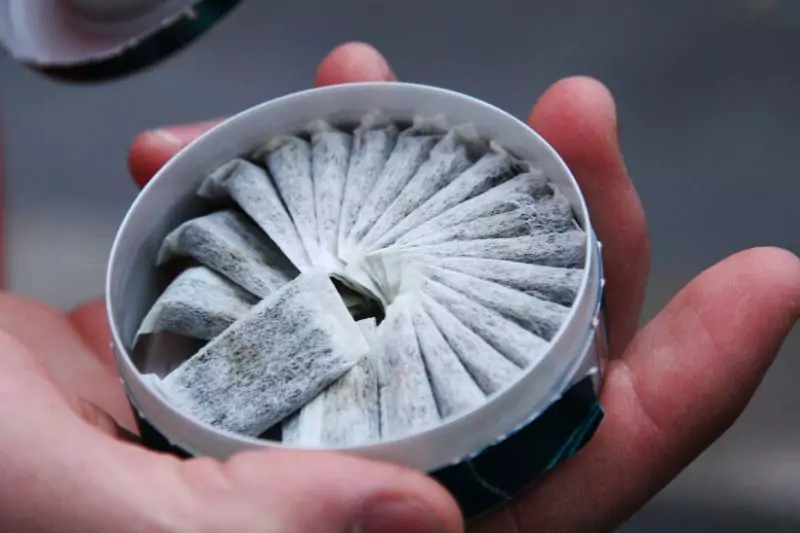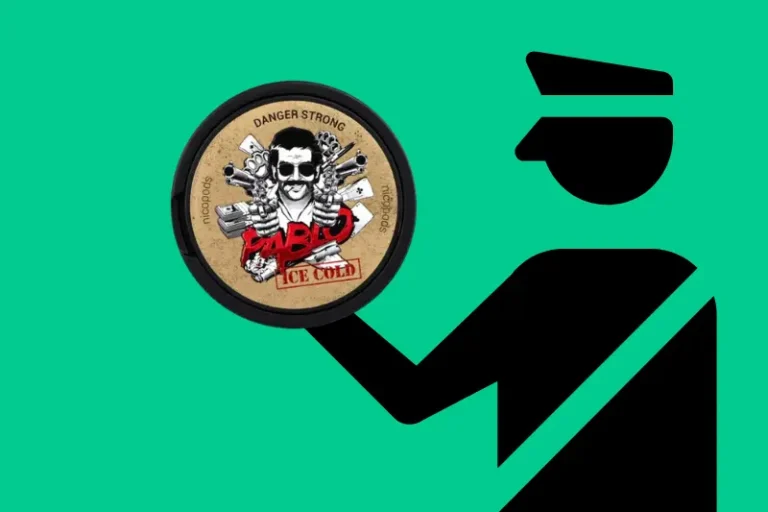What is Snus? A Beginner’s Guide to Swedish Snus
If you’ve heard about snus but aren’t quite sure what it is, you’re not alone. Furthermore, understanding what is snus has become increasingly important as this traditional Swedish tobacco product gains international attention as a smokeless alternative, yet many people remain unclear about its nature and usage.
In this beginner’s guide to Swedish snus, we’ll explore everything from its origins and ingredients to proper usage techniques. Additionally, we’ll cover why it’s become popular worldwide. Whether you’re considering trying snus for the first time or simply curious about this Scandinavian tradition, this comprehensive guide will answer all your questions.
What is Snus? The Definition and Basics of Swedish Tobacco
What is snus exactly? Snus (pronounced “snoose”) is a moist, smokeless tobacco product that originated in Sweden in the early 18th century. Unlike traditional chewing tobacco or dip, this Swedish product is pasteurized rather than fermented and doesn’t require spitting, making it a more discreet alternative to smoking.
Key characteristics include:
- Finely ground tobacco that’s steam-pasteurized
- Available either loose or in small, pre-portioned pouches
- Placed between the upper lip and gum
- No spitting required
- Typically used for 30-60 minutes per portion
Moreover, the word “snus” comes from the Swedish verb “snusa,” which historically meant to sniff or snuff tobacco. However, modern versions are not inhaled but rather placed in the mouth to allow nicotine absorption through the oral mucosa.
What makes this product unique is its manufacturing process. In contrast to other smokeless tobacco products, Swedish versions undergo strict quality control and pasteurization, which significantly reduces harmful bacteria and tobacco-specific nitrosamines (TSNAs) compared to other forms of tobacco.

The History: From 1700s Sweden to Today
The story begins in 18th century Sweden, evolving from dry nasal snuff into the moist oral tobacco product we know today. Subsequently, here’s how this product developed over the centuries:
Early Origins (1700s)
Initially, dry snuff tobacco arrived in Sweden from France. Swedish tobacco users then began mixing snuff with water to create a moist product. Rather than sniffing it, they placed this moist tobacco under the lip. As a result, the practice quickly spread among Swedish workers and farmers.
Industrial Development (1800s)
In 1822, Jacob Fredrik Ljunglöf revolutionized production methods. Furthermore, he introduced pasteurization and created the first commercial brand. His company later became part of Swedish Match. Consequently, mass production made the product affordable for the working class.
Modern Era (1900s-Present)
Throughout the decades, several key developments occurred:
- 1970s: Introduction of portion format in small pouches
- 1990s: Recognition as a potential harm reduction tool
- 2000s: EU implements ban on sales except in Sweden
- 2010s: Global interest grows as smoking rates decline
- Today: Swedish Match dominates with brands like General and Göteborgs Rapé
Currently, this tobacco product remains deeply embedded in Swedish culture, with approximately 18% of Swedish men using it regularly. Notably, Sweden has the lowest smoking rates in Europe, which many attribute partly to the availability of this alternative to cigarettes.

How is Snus Made? The Manufacturing Process Explained
The production follows a carefully controlled process that distinguishes it from other tobacco products. First, understanding this process helps explain the different characteristics compared to traditional smokeless tobacco.
Step 1: Tobacco Selection and Preparation
Initially, manufacturers select high-quality tobacco leaves. These leaves are then air-dried and stemmed before being ground to specific consistency.
Step 2: Pasteurization
Next, the ground tobacco is mixed with water and salt. The mixture is subsequently heated to 100°C (212°F) for 24-36 hours. This heat treatment effectively kills bacteria and reduces TSNAs, similar to milk pasteurization.
Step 3: Flavor Addition
Following pasteurization, manufacturers add basic ingredients including salt, sodium carbonate, and humectants. They then incorporate various flavorings such as bergamot, mint, or licorice. Additionally, they adjust pH to optimize nicotine delivery and control moisture content (typically 30-50%).
Step 4: Packaging
Finally, the product is packaged appropriately:
- Loose varieties: Packed in round cans
- Portion varieties: Tobacco filled into small pouches
- Original portions: Moist from the start
- White portions: Initially drier with less drip
- All products are then sealed for freshness
Quality Control Throughout the process, manufacturers conduct regular testing for harmful substances. Furthermore, strict Swedish food-grade standards apply. The GothiaTek quality standard ensures safety, while refrigerated storage maintains freshness.

Types Available: Loose vs Portion Formats
Swedish tobacco products come in two main formats, each with distinct characteristics and user preferences. Understanding these types helps beginners choose the right product for their needs.
Loose Format (Lös)
This traditional format dates back centuries. Users receive moist, ground tobacco sold in cans and form their own portions (prilla). Although it requires a hand-packing technique, it offers customizable portion sizes. Many users appreciate its stronger flavor and find it more economical per use.
Portion Format
Pre-packaged in small pouches for convenience, these come in several varieties:
Original Portion These feature moist pouches in traditional brown color. They deliver immediate flavor and nicotine release. Users experience more noticeable drip. Many prefer this for its traditional characteristics.
White Portion In contrast, these are drier pouches with white material. They provide slower, more controlled release with less drip and enhanced discretion. Additionally, the flavor tends to last longer.
All-White/Nicotine Pouches Although not technically traditional snus, these tobacco-free options contain nicotine and flavorings. They offer no tobacco taste or staining, making them the most discreet option.
Size Variations:
Different sizes suit various preferences:
- Large/Regular: Standard size portions
- Slim: Narrower format for discretion
- Mini: Smallest size, very discreet
- Maxi: Extra large for experienced users
How to Use Snus: A Step-by-Step Guide
Using this product properly ensures the best experience and maximum satisfaction. Therefore, here’s a comprehensive guide for beginners:
For Portion Format:
- First, open the can and select one pouch
- Next, place the pouch between your upper lip and gum
- Position it slightly off-center for comfort
- Subsequently, leave it in place for 30-60 minutes
- Finally, dispose of used portions responsibly
For Loose Format:
- Initially, open the can and use the built-in tool or your fingers
- Take a pinch of tobacco (about 1-2 grams)
- Then, roll it into a cylindrical shape (prilla)
- Gently compress to hold shape
- Place under your upper lip
- If needed, shape with your tongue
Important Tips:
- Always start with milder strengths
- Don’t chew or suck on the portion
- Expect slight tingling initially
- Remember that some salivation is normal
- There’s no need to spit
- Keep portions on one side to prevent gum irritation
- Store unused product in refrigerator
What to Expect:
Initially, you may experience a tingling or burning sensation (this is normal). Furthermore, increased salivation is common for first few uses. Nicotine effects typically begin within 5-10 minutes. The flavor usually lasts 30-60 minutes, while effects can persist for 1-2 hours.
Popular Swedish Brands You Should Know
The Swedish market is dominated by several established brands, each with unique characteristics and devoted followings. Here are the most important ones:
General
As Sweden’s most popular brand, General has been made by Swedish Match since 1866. It’s particularly known for bergamot and citrus flavors and is available worldwide. Popular varieties include Original, White, G.3, and G.4.
Göteborgs Rapé
This premium brand, established in 1919, features distinctive juniper and herb flavors. Consequently, it’s popular among connoisseurs who appreciate its balanced, refined taste.
Ettan
As Sweden’s oldest brand (1822), Ettan offers pure, traditional tobacco flavor without added flavorings. Therefore, it remains popular with purists and is available in both loose and portion formats.
Lundgrens
This modern brand stands out with unique flavors and perforated pouches. Their regional Swedish themes include popular varieties like Skåne, Norrland, and Västkusten.
Skruf
As an independent manufacturer, Skruf emphasizes fresh, modern flavors. They’re particularly popular with younger users and known for quality and innovation.
Additional Notable Brands:
- Nick & Johnny: Premium craft options with strong flavors
- The Three Crowns (Tre Kronor): Traditional budget-friendly choice
- Knox: Value-oriented brand from Skruf family
Health Considerations: Comparing Risks with Cigarettes
The health impacts compared to cigarettes have been extensively studied, particularly in Sweden where usage is widespread. Here’s what research reveals:
Reduced Harm Compared to Smoking:
First and foremost, there’s no combustion, meaning no tar or carbon monoxide. Additionally, carcinogen levels are significantly lower. There’s no secondhand smoke exposure, reduced risk of lung cancer and COPD, and lower cardiovascular risk than smoking.
Swedish Experience:
Notably, Sweden has the EU’s lowest smoking rates (5%) and the lowest male lung cancer rates in Europe. Furthermore, studies suggest this product helped many quit smoking. Public health authorities recognize its harm reduction potential.
Health Risks to Consider:
Nevertheless, it’s important to understand that this product still contains addictive nicotine. There’s a possible increased risk of pancreatic cancer, potential effects on oral health (gum recession), and possible cardiovascular effects. Therefore, it’s not a risk-free product.
Research Findings:
Studies indicate it’s 90-95% less harmful than cigarettes with no confirmed link to oral cancer. Users show lower mortality rates than smokers, and it can be an effective smoking cessation aid.
Important Considerations:
While safer than smoking, this product is not harmless. The best option remains avoiding all tobacco. However, it’s significantly safer than smoking, though individual health risks vary. Always consult healthcare providers for personal advice.
Legal Status and Regulations Worldwide
The legal status varies dramatically worldwide, creating a complex regulatory landscape:
Sweden Here, the product is completely legal and regulated. It’s sold in regular stores with an age restriction of 18 years. Extensive quality standards apply, and it’s considered part of culture and tradition.
European Union In contrast, sales have been banned since 1992, though Sweden has an exemption. Personal import is allowed in some countries, but online sales are restricted. Ongoing legal debates continue.
Norway Similarly to Sweden, it’s legal and widely available. As Norway isn’t an EU member, it sets its own rules. High taxes apply, but there’s a strong cultural acceptance. The age limit is 18 years.
United States The product is legal nationwide and FDA regulated since 2009. Some products have received “modified risk” status. An age restriction of 21 years applies, and the market is growing.
Other Major Markets:
- United Kingdom: Currently banned (pre-Brexit EU law)
- Canada: Technically illegal for sale with limited enforcement
- Australia/New Zealand: Heavily restricted with no commercial sales
- Asian Markets: Varied regulations, often gray areas
Frequently Asked Questions About Snus
What is snus?
Snus is a moist, smokeless tobacco product that originated in Sweden. It consists of finely ground tobacco that is pasteurized rather than fermented, packaged in either loose form or small pouches, and placed between the upper lip and gum for 30-60 minutes. Unlike other forms of smokeless tobacco, snus doesn’t require spitting.
Is snus legal?
The legality of snus varies by country. It’s legal and regulated in Sweden and Norway, legal in the United States (with FDA regulation since 2009), but banned for sale in the EU except Sweden. Many countries like Thailand operate in a gray area where snus is technically restricted but openly sold in physical stores.
How much nicotine is in snus?
Snus nicotine content varies by product:
Regular strength: 8-14 mg/g
Strong: 14-26 mg/g
Extra strong: 26-45 mg/g Actual nicotine absorption is typically 10-20% of the total content.
Can this product help me quit smoking?
Many smokers successfully switch as a less harmful alternative. Swedish studies show it can be an effective smoking cessation aid. However, you’re replacing one nicotine product with another, so complete nicotine cessation requires additional steps.
Conclusion: Is This Swedish Product Right for You?
Swedish snus represents a unique tobacco product with a rich cultural history and growing international interest. As a pasteurized, smokeless tobacco option, it offers certain advantages over traditional cigarettes while still carrying health risks associated with nicotine use.
Key takeaways:
- Originated in Sweden over 200 years ago
- Pasteurized manufacturing reduces harmful compounds
- Available in loose or convenient portion formats
- Substantially less harmful than smoking
- Still addictive due to nicotine content
- Legal status varies by country
- Popular brands offer diverse flavors and strengths
For those considering this product:
- Research local regulations before purchasing
- Start with milder options if new to tobacco
- Understand it’s not risk-free
- Consider it for harm reduction if you smoke
- Store properly for best experience
- Choose quality brands for safety
Whether this Swedish tobacco product is right for you depends on your personal circumstances, health goals, and local regulations. While it presents a less harmful alternative to smoking, the healthiest choice remains avoiding tobacco products altogether. If you do choose to try it, opt for quality products from reputable manufacturers and use responsibly.
This guide has covered essential information about Swedish snus, from its history and manufacturing to practical usage tips and health considerations. As the global tobacco landscape continues to evolve, this traditional product remains an important part of the conversation about harm reduction and alternatives to smoking.







